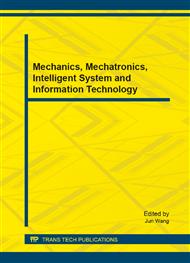p.437
p.443
p.449
p.454
p.457
p.464
p.471
p.477
p.482
A Novel Level Set Method for Remote Sensing Image
Abstract:
Due to the characteristic of remote sensing image, we propose a novel method based on K-means algorithm also with the improved multi-phrase level set model. Comparing with the classical multi-phase C-V model, the improved model considers the region area information, gradient information and edge detection .Proper use of gradient information can overcome the inaccurate edge localization defects in image segmentation. The edge detection is used for keeping the boundary information better in the evolution process .For the reason of picking up the contour’s convergent speed and enable the avoidance of trap .Four stages are constructed. Firstly, a median filtering is applied to smooth the original image and reduce parts of noise. Secondly, the usage of K-means algorithm gains more obvious differences of characteristics. Next, the reconstruction of gradient is obtained by using Sobel operator. Finally, segmentation result is achieved by using an improved method of multi-phase level set image segmentation. Experimental results show that the proposed approach has advantages in rapid and efficient application of remote sensing image segmentation.
Info:
Periodical:
Pages:
457-463
Citation:
Online since:
August 2014
Authors:
Price:
Сopyright:
© 2014 Trans Tech Publications Ltd. All Rights Reserved
Share:
Citation:


